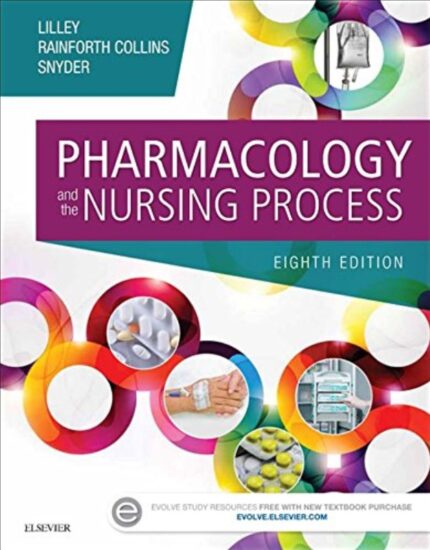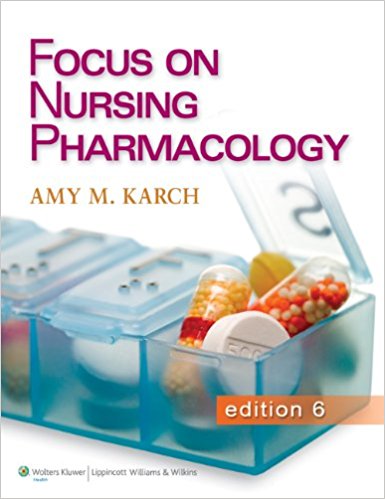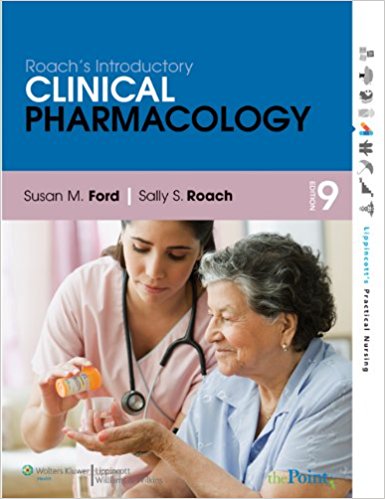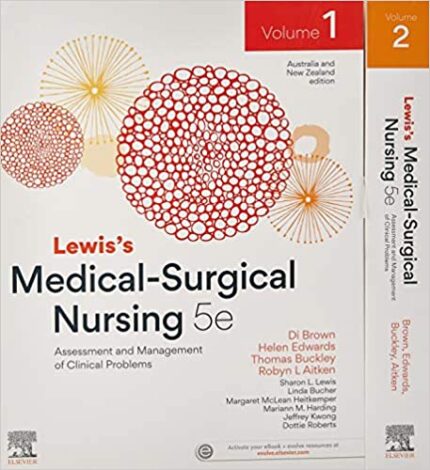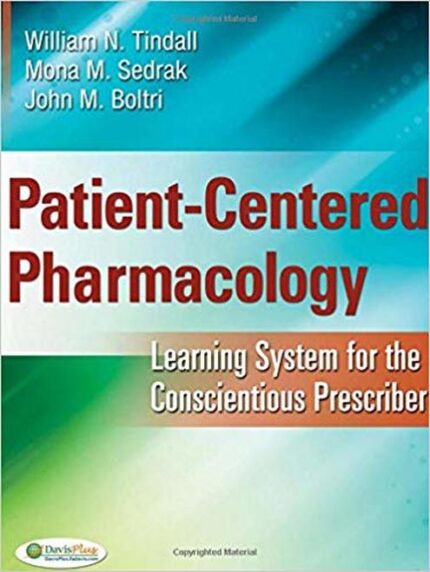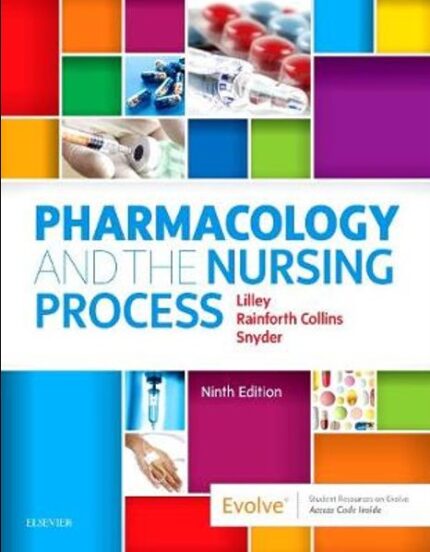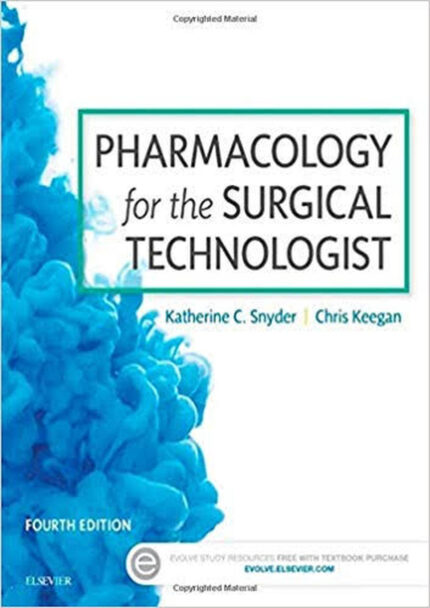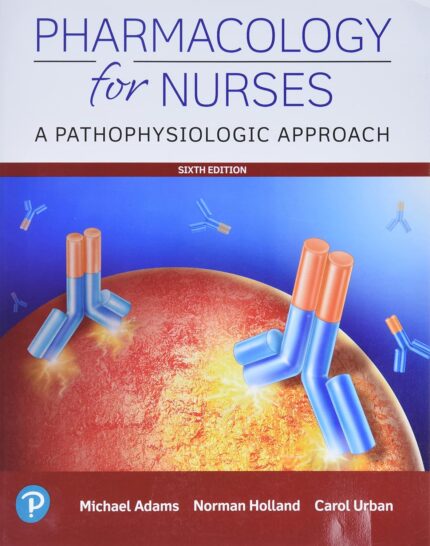Test Bank for Pharmacology 10th Edition by McCuistion
Chapter 01: The Nursing Process and Patient-Centered Care
MULTIPLE CHOICE
1. The nursing process is a five-step decision-making approach that includes all of the following
steps, EXCEPT:
a. Assessment
b. Patient problem
c. Planning
d. Right Drug
ANS: D
The nursing process is a five-step decision-making approach that includes: 1) assessment, 2)
the patient problem, 3) planning, 4) implementation, and 5) evaluation. “Right drug” is one of the
“Six Rights” of medication administration.
DIF: Cognitive Level: Understanding (Comprehension) TOP: Nursing Process: Planning
MSC: NCLEX: Management of Care
2. The nurse is using data collected to set goals or expected outcomes and interventions that
address the patient’s problems. Which step of the nursing process is the nurse applying?
a. Assessment
b. Patient problem
c. Planning N
d. Evaluation
ANS: C
During the planning phase, the nurse uses the data collected to set goals or expected outcomes
and interventions which address the patient’s problems. The data was collected during the
“Assessment” and “Patient problem” steps. During the “Evaluation” phase the nurse would
determine whether the goals and objectives set during the planning phase were met.
DIF: Cognitive Level: Understanding (Comprehension)
TOP: Nursing Process: Nursing Intervention
MSC: NCLEX: Management of Care
3. A 5-year-old child with type 1 diabetes mellitus has had repeated hospitalizations for episodes
of hyperglycemia. The parents tell the nurse that they can’t keep track of everything that has
to be done to care for their child. The nurse reviews medications, diet, and symptom
management with the parents and draws up a daily checklist for the family to use. These
activities are completed in which step of the nursing process?
a. Assessment
b. Planning
c. Implementation
d. Evaluation
ANS: C
The implementation phase is the part of the nursing process in which the nurse provides
education, drug administration, patient care, and other interventions necessary to assist the
patient in accomplishing established medication goals.
DIF: Cognitive Level: Understanding (Comprehension)
TOP: Nursing Process: Nursing Intervention
MSC: NCLEX: Management of Care
4. The nurse is preparing to administer a medication and reviews the patient’s chart for drug
allergies, serum creatinine, and blood urea nitrogen (BUN) levels. The nurse’s actions are
reflective of which phase of the nursing process?
a. Assessment
b. Evaluation
c. Implementation
d. Planning
ANS: A
Assessment involves gathering information about the patient and the drug, including any
previous use of the drug.
DIF: Cognitive Level: Understanding (Comprehension)
TOP: Nursing Process: Assessment MSC: NCLEX: Management of Care
5. Which assessment is categorized as objective data?
a. A list of herbal supplements regularly used
b. Lab values associated with the drugs the patient is taking
c. The ages and relationship to the patient of all household members
d. Usual dietary patterns and fNood intake
ANS: B
Objective data are measured and detected by another person and would include lab values.
The other examples are subjective data.
DIF: Cognitive Level: Understanding (Comprehension)
TOP: Nursing Process: Assessment MSC: NCLEX: Management of Care
6. The nurse reviews a patient’s database and learns that the patient lives alone, is forgetful, and
does not have an established routine. The patient will be sent home with three new
medications to be taken at different times of the day. The nurse develops a daily medication
chart and enlists a family member to put the patient’s pills in a pill organizer. This is an
example of which phase of the nursing process?
a. Assessment
b. Evaluation
c. Implementation
d. Planning
ANS: C
The implementation phase involves education and patient care in order to assist the patient to
accomplish the goals of treatment.
DIF: Cognitive Level: Applying (Application)
TOP: Nursing Process: Nursing Intervention
MSC: NCLEX: Management of Care
7. A patient who is hospitalized for chronic obstructive pulmonary disease (COPD) wants to go
home. The nurse and the patient discuss the patient’s situation and decide that the patient may
go home when able to perform self-care without dyspnea and hypoxia. This is an example of
which phase of the nursing process?
a. Assessment
b. Evaluation
c. Implementation
d. Planning
ANS: D
Planning involves goal setting, which, for this patient, means being able to perform self-care
activities without dyspnea and hypoxia.
DIF: Cognitive Level: Understanding (Comprehension) TOP: Nursing Process: Planning
MSC: NCLEX: Management of Care
8. A patient will be sent home with a metered-dose inhaler, and the nurse is providing teaching.
Which is a correctly written goal for this process?
a. The nurse will demonstrate the correct use of a metered-dose inhaler to the patient.
b. The nurse will teach the patient how to administer medication with a metered-dose
inhaler.
c. The patient will know how to self-administer the medication using the
metered-dose inhaler.
d. The patient will independently administer the medication using the metered-dose
inhaler at the end of the session.
N
ANS: D
Goals must be patient-centered and clearly state the outcome with a reasonable deadline and
should identify components for evaluation.
DIF: Cognitive Level: Applying (Application) TOP: Nursing Process: Planning
MSC: NCLEX: Management of Care
9. The nurse is developing a plan of care for a patient who has chronic lung disease and hypoxia.
The patient has been admitted for increased oxygen needs above a baseline of 2 L/min. The
nurse develops a goal stating, “The patient will have oxygen saturations of >95% on room air
at the time of discharge from the hospital.” What is wrong with this goal?
a. It cannot be evaluated.
b. It is not measurable.
c. It is not patient-centered.
d. It is not realistic.
ANS: D
This goal is not realistic because the patient is not usually on room air and should not be
expected to attain that goal by discharge from this hospitalization.
DIF: Cognitive Level: Applying (Application) TOP: Nursing Process: Planning
MSC: NCLEX: Management of Care
10. The nurse is developing a teaching plan for an elderly patient who will begin taking an
antihypertensive drug that causes dizziness and orthostatic hypotension. Which patient
problem documented by the nurse is appropriate for this patient?
a. Deficient knowledge related to drug side effects
b. Ineffective health maintenance related to age
c. Readiness for enhanced knowledge related to medication side effects
d. Risk for injury related to side effects of the medication
ANS: D
This patient has an increased risk for injury because of drug side effects, so this is an
appropriate patient problem to direct the type of care and follow-up the patient will receive.
DIF: Cognitive Level: Applying (Application)
TOP: Nursing Process: Nursing Diagnosis
MSC: NCLEX: Management of Care



